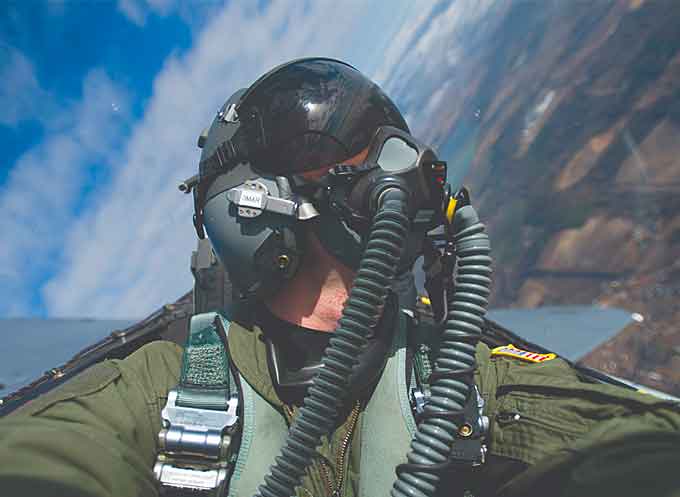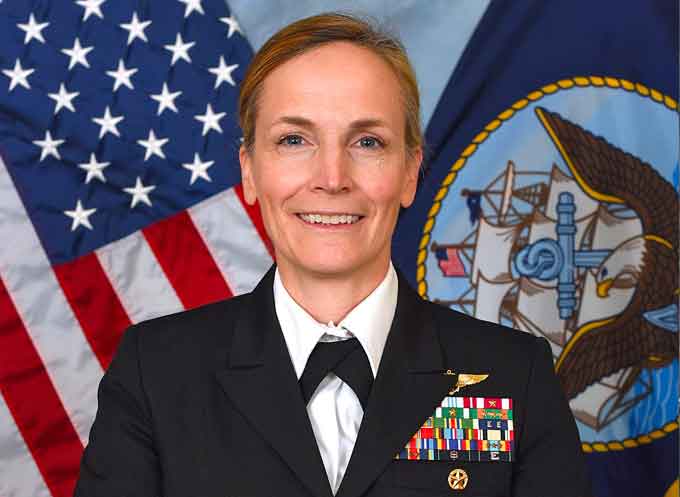
Cobham’s VigilOX™ pilot breathing sensor system recently flew three test flights on U.S. Navy F-18 and T-45 aircraft, as acknowledged by Rear Admiral Sara Joyner during the House Armed Services Committee Hearing in February, 2018.
VigilOX™, in an earlier form known as AMPSS, is the first pilot worn sensing system to comprehensively capture real-time physiological, breathing gas, and cockpit environmental data during flight, which will be used to help inform conditions around unexplained physiological episodes.

Cobham, along with the Navy, medical, and research professionals, are in the initial stages of reviewing the post flight data, which will be correlated to reported hypoxia-like symptoms.
This data will form the basis of a predictive algorithm that will ultimately drive oxygen equipment to automatically adjust oxygen dosage as needed to protect the pilot.
“Having these developmental sensors flying, along with testing in the lab, will show what happens in the aircraft and physiologically under hyperventilation or hypoxia-like conditions, and will inform us as we work to design a mitigative response to protect the pilot,” said Rob Schaeffer, Product Director, Environmental Systems at Cobham Mission Systems.
The Cobham VigilOX™ sensor system marks a significant milestone in being able to monitor pilot physiology in flight.
(Learn More. Major Jeremy Gordon of the Virginia Air National Guard describes the health problems he began to experience after flying the F-22 fighter jet. Courtesy of CBS News and YouTube)
In parallel with data collection efforts, Cobham is moving towards a “predict and protect” capability that will take our sensors to the next level by incorporating them into oxygen equipment that will autocorrect flow based on sensor data.
Cobham is investing in its future next generation oxygen system by designing equipment today that has inherent ability to communicate, synch with, and connect with our sensing technologies as they evolve, which is a step towards ARGOS™, Cobham’s integrated oxygen system goal.
ARGOS™, Auto Response Guided Oxygen System, will be a smart data driven, human machine interface, that has the ability to control the entire pilot oxygen system from “air source to mask”.

Comprised of a suite of technologies, ARGOS™ smart oxygen system products will be able to be used individually or together for increased layers of vigilance.
“By wearing our VigilOX™ sensor system during flight, pilots today are laying the groundwork for the breakthroughs needed to protect future pilots coming up behind them,” added Schaeffer.
Through initial testing of the developmental product, Cobham has begun to fund changes required for mainstream integration into the fleet.
In future iterations, VigilOX™ sensors will be integrated into the mask to reduce mass.
In addition to monitoring the pilot, Cobham also produces a CRU-123 solid state oxygen monitor that captures critical oxygen concentrator performance data.
(Learn More. The inhalation sensor block is the first instalment of a two part breathing sensor solution that will also include an exhalation sensor block. Together they will work to capture cockpit environmental, oxygen system performance, and pilot physiological data to help discern root cause of debilitating physiological events that continue to plague aircrew safety and mission readiness. Courtesy of Cobham plc and YouTube)

















